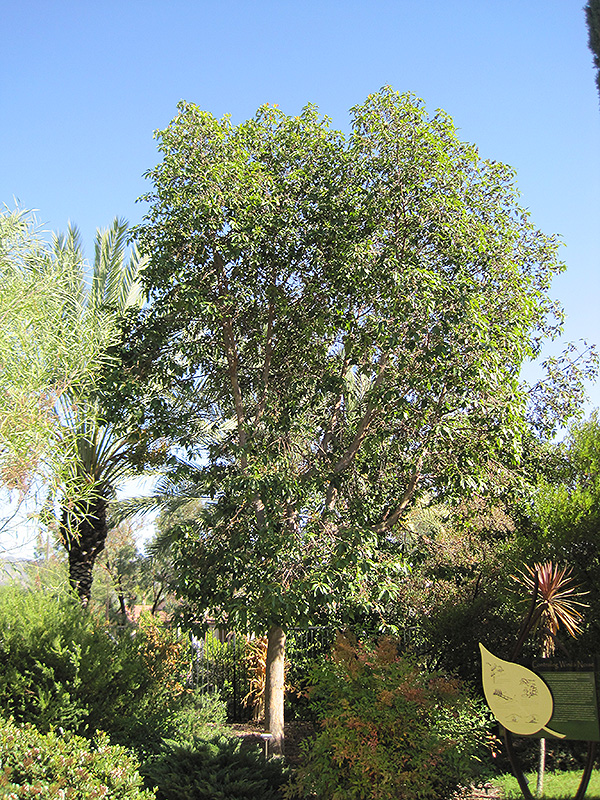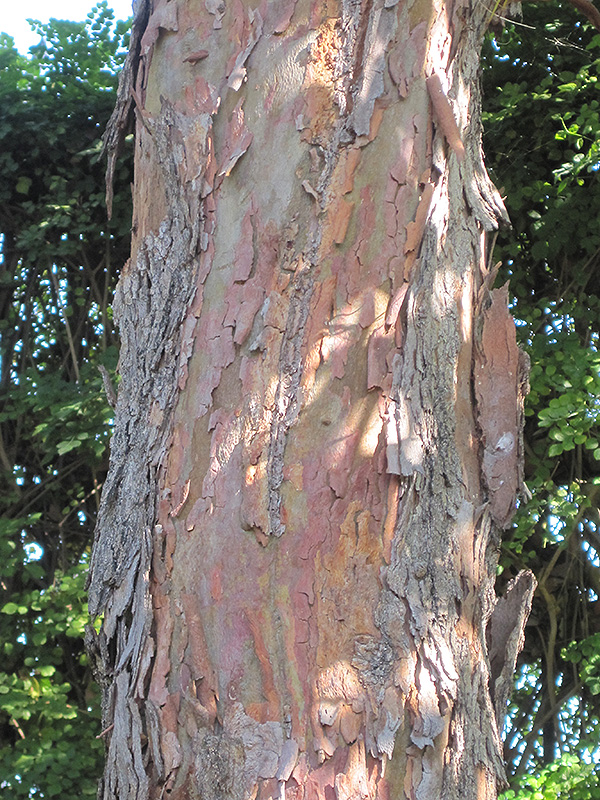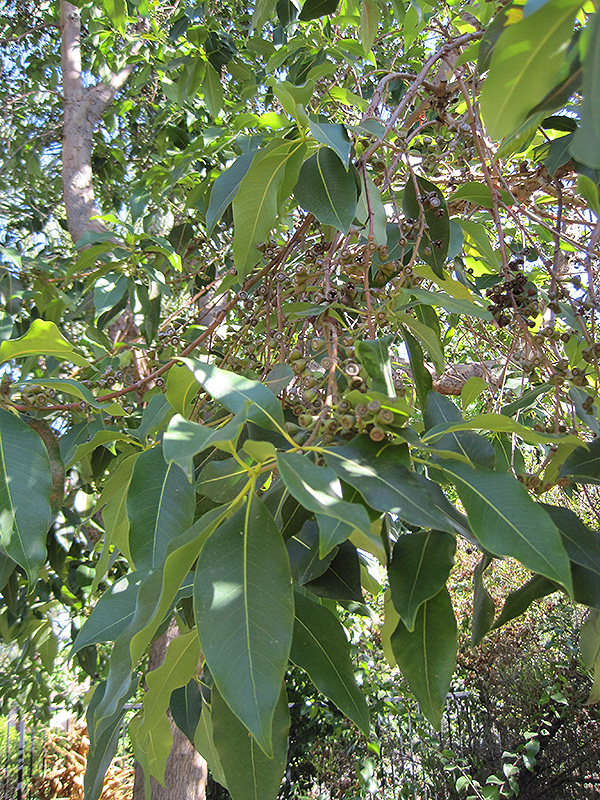Height: 40 feet
Spread: 40 feet
Sunlight:
![]()
![]()
Hardiness Zone: 8b
Other Names: Queensland Brush Box, syn. Tristania conferta
Description:
A medium to fast growing tree, producing a dense, symmetrical crown of glossy, deep green foliage; feathery white flowers bloom in spring and summer; very drought tolerant once established; excellent for street planting and shade
Ornamental Features
Brisbane Box features showy clusters of fragrant white flowers at the ends of the branches from late spring to early summer. It has attractive dark green foliage with pointy buttery yellow spines. The glossy pointy leaves are highly ornamental and remain dark green throughout the winter. It produces tan capsules in late summer. The peeling khaki (brownish-green) bark is extremely showy and adds significant winter interest.
Landscape Attributes
Brisbane Box is an evergreen tree with an upright spreading habit of growth. Its average texture blends into the landscape, but can be balanced by one or two finer or coarser trees or shrubs for an effective composition.
This is a relatively low maintenance tree, and should only be pruned after flowering to avoid removing any of the current season's flowers. It is a good choice for attracting bees to your yard. It has no significant negative characteristics.
Brisbane Box is recommended for the following landscape applications;
- Accent
- Shade
- Hedges/Screening
- Windbreaks and Shelterbelts
Planting & Growing
Brisbane Box will grow to be about 40 feet tall at maturity, with a spread of 40 feet. It has a low canopy with a typical clearance of 4 feet from the ground, and should not be planted underneath power lines. It grows at a medium rate, and under ideal conditions can be expected to live for 80 years or more.
This tree does best in full sun to partial shade. It is very adaptable to both dry and moist locations, and should do just fine under average home landscape conditions. It may require supplemental watering during periods of drought or extended heat. It is not particular as to soil type, but has a definite preference for acidic soils, and is subject to chlorosis (yellowing) of the foliage in alkaline soils. It is highly tolerant of urban pollution and will even thrive in inner city environments. This species is not originally from North America.




